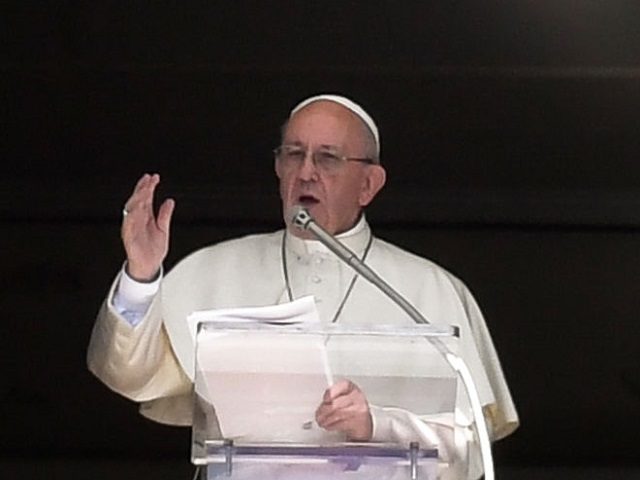The Vatican has released the full text of a letter from emeritus Pope Benedict XVI it had previously altered, but the contents of the letter have turned out to be worse than anyone suspected.
A flurry of news reports accused the Vatican communications department of propagating “fake news” because it had digitally manipulated a photo of the first page of the letter, intentionally blurring the final two lines so they would be illegible.
The Vatican had sought to use a selection of the letter as an endorsement by Benedict of a new 11-volume series of books exploring the theology of Pope Francis, when in fact the letter basically said the opposite.
Read in its entirety, the letter comes across as a polite refusal to write a foreword to the collection, but also includes a sharply critical comment regarding the way the series was put together.
The head of the Vatican’s newly consolidated communications department, Msgr. Dario Viganò, read a selection from Benedict’s letter aloud at the book presentation on Monday emphasizing the “spiritual continuity” between his pontificate and that of Francis. Soon afterward, Viganò’s office released the doctored photograph of the first page of the letter, which also contained a glimpse of Benedict’s signature, while carefully concealing the contents of the second page.
In announcing its decision Saturday to release the full contents of the letter, the unsigned Vatican communiqué adopted a decidedly defensive tone, calling the photo-doctoring an “alleged censorial manipulation” of the image.
The decision to alter the photo was “motivated by discretion and not by any attempt at censorship,” the statement reads, adding that the Vatican had decided to make the letter available in its entirety “to dispel any doubt.”
Unfortunately, the concealed content of the letter that has now been made public suggests that the communications office wished to spin Benedict’s letter in a way that would have been impossible had the whole letter been released.
After saying that he would not write a preface to the collection, since on principle he would never express an opinion on texts that he had never read (and he had no intention of reading them any time soon), the emeritus pope proceeded to criticize the editor’s choice to entrust one of the volumes to a dissenting theologian known for his hostility to the papal magisterium.
Benedict notes his “surprise” at the choice of professor Peter Hünermann as one of the authors, since he “distinguished himself during my pontificate by spearheading anti-papal projects.”
Moreover, Hünermann was a key figure in the publication of the Kölner Erklärung, which, “virulently attacked the magisterial authority” of Pope John Paul II, “especially concerning moral theology,” Benedict wrote.
Additionally, on founding the “Europäische Theologengesellschaft,” Hünermann conceived of the association’s identity “in opposition to the papal magisterium” which was only altered later because of the good sense of other theologians in the group, Benedict said.
Even prior to the Vatican’s release of the full text of the letter, veteran Vatican analyst Sandro Magister wrote that he had learned from an “unimpeachable source” that the second page of Benedict’s letter contained a criticism of the judgment of the editors in having Peter Hünermann write one of the volumes.
The fact that the news had already been leaked leaves room for the possibility that the Vatican only released the full contents of the letter because the damage had already been done, rather than out of an attempt to atone for its lack of integrity in doctoring the letter.
The Lettergate scandal has hit the Vatican particularly hard because it follows on the heels of the publication of a document in which Pope Francis forcefully denounced the spread of “fake news.”
The Vatican’s manipulation of the photograph, which the Associated Press (AP) said “violated photojournalist industry standards,” came just two months after Pope Francis railed against disinformation and “fake news” in his annual Message for the World Day of Communications.
In that Message, Francis said that he wished to contribute to “stemming the spread of fake news and to rediscovering the dignity of journalism and the personal responsibility of journalists to communicate the truth.”
Fake news “refers to the spreading of disinformation on line or in the traditional media,” the pope said. “It has to do with false information based on non-existent or distorted data meant to deceive and manipulate the reader.”
Even a “slight distortion of the truth can have dangerous effects,” Francis said.
Even prior to the release of the Message, Pope Francis had denounced the spread of fake news on several occasions, comparing it to excrement and condemning it as a “very grave sin.”
Follow Thomas D. Williams on Twitter Follow @tdwilliamsrome

COMMENTS
Please let us know if you're having issues with commenting.